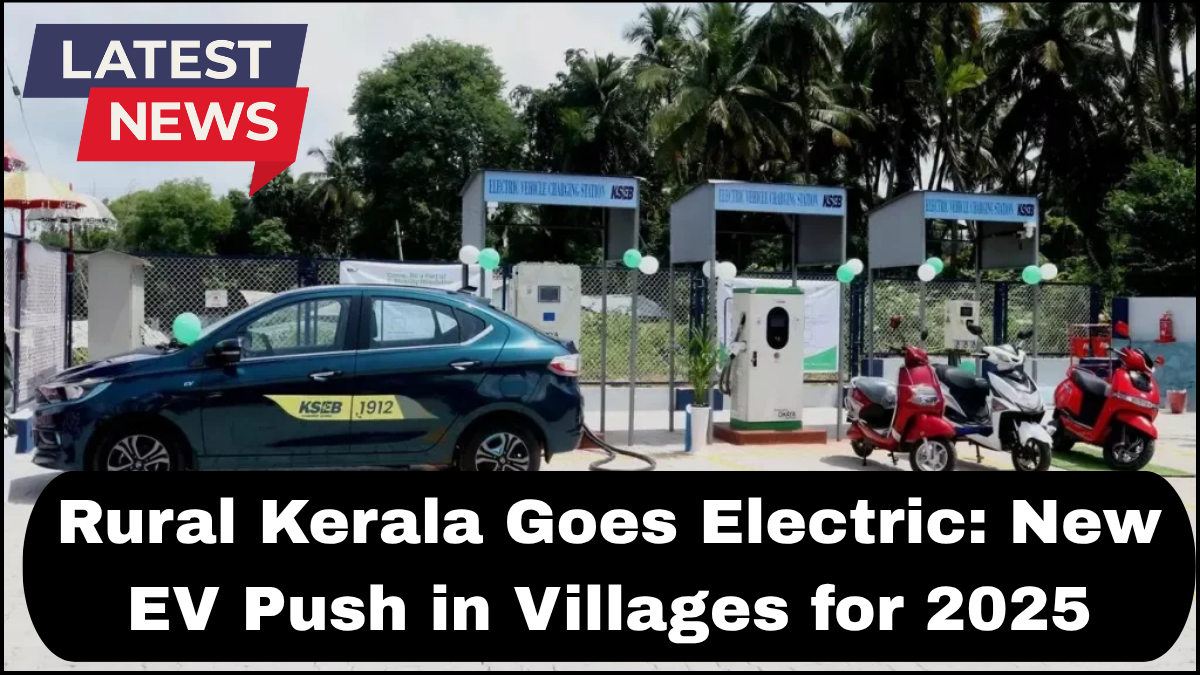Kerala is taking bold strides toward a sustainable future, and this time, the spotlight is on its rural heartlands. As the state gears up for 2025, a significant shift is underway: the electrification of transport in its villages. This movement marks a turning point in Rural EV adoption in Kerala, setting a model for other regions across India.

Why Rural EV Adoption Matters Now
The push for electric vehicles (EVs) in urban areas has been underway for years, but rural India has lagged behind—largely due to infrastructural and financial limitations. However, Kerala’s new initiative aims to change that narrative. Rural communities, often heavily reliant on outdated and polluting vehicles, are now poised to benefit from cleaner, more cost-effective alternatives.
The focus is not just on reducing carbon emissions. The government sees EVs as a way to reduce dependence on fossil fuels, cut transportation costs for villagers, and introduce tech-forward employment and entrepreneurial opportunities.
The 2025 Village EV Transport Plan
The Village EV transport plan for 2025 includes a comprehensive framework for introducing electric mobility solutions tailored to the specific needs of rural areas. This includes:
-
Deployment of Electric Auto Rickshaws and Mini Buses: These will serve as the backbone of rural transit, offering first- and last-mile connectivity between homes, schools, farms, markets, and health centers.
-
Affordable Financing and Subsidies: To make EVs accessible to lower-income rural populations, the plan includes interest-free loans, state subsidies, and partnerships with microfinance institutions.
-
Charging Infrastructure Rollout: Kerala’s local bodies will work with private and public partners to establish charging stations in Panchayats, bus stops, and public markets. Solar-powered units are also being tested in off-grid areas.
-
Skill Development for EV Maintenance: To support this transition, training programs are being launched to equip local youth with skills in EV repair, battery management, and maintenance.
Government Backing and Local Support
This transformation is being powered by a collaborative effort between the Kerala State Electricity Board (KSEB), the Department of Transport, and local self-governing institutions. The state’s Renewable Energy Policy emphasizes decentralized planning, ensuring villages have the autonomy to customize implementation strategies.
Community engagement has played a vital role. Pilot projects in districts like Wayanad, Idukki, and Palakkad have shown strong public interest. In some villages, cooperatives have pooled resources to purchase shared EVs, used for both passenger transport and farm-to-market delivery services.
Economic and Environmental Benefits
Rural EV adoption in Kerala is not just a green initiative—it’s an economic catalyst. Operating costs for electric vehicles are significantly lower than petrol or diesel counterparts. Over time, this translates into savings for farmers, traders, and rural workers who rely heavily on transportation.
From an environmental perspective, switching to EVs will help reduce air pollution and protect Kerala’s fragile ecosystems, particularly in highland and agricultural zones. Reduced noise pollution is another benefit, especially in densely populated village centers.
Key Challenges and Solutions
While the roadmap is ambitious, challenges remain:
-
Electricity Availability: Though Kerala has a strong grid, remote villages may face supply issues. The state is working to integrate solar and microgrid solutions to fill gaps.
-
Battery Recycling and Disposal: A framework for the safe disposal and recycling of lithium-ion batteries is being developed with central assistance.
-
Behavioral Shift: Resistance to change is natural. Awareness campaigns, test drives, and success stories from early adopters are being used to encourage wider participation.
Kerala’s Model as a Blueprint
Kerala’s EV strategy stands out for being inclusive, practical, and environmentally driven. If successful, this approach to rural electrification through transportation could be replicated in other Indian states. It shows that clean mobility doesn’t have to be limited to cities—and that rural progress can be both sustainable and scalable.
FAQs
Q1: What is the goal of the Village EV transport plan in Kerala?
The plan aims to introduce electric vehicles in rural areas for affordable, eco-friendly mobility. It focuses on mini buses, electric rickshaws, infrastructure, and local employment in EV services.
Q2: How is the government supporting Rural EV adoption in Kerala?
Support includes subsidies, interest-free loans, EV training centers, and infrastructure development like charging stations in village hubs.
Q3: Are electric vehicles viable in remote villages with limited power supply?
Yes. Kerala is exploring solar-powered charging stations and localized microgrids to ensure charging availability even in remote areas.
Q4: What kinds of EVs will be introduced in rural Kerala?
Primarily electric auto rickshaws, small vans, and electric mini buses will be deployed for public and shared transport needs.
Q5: How will this initiative impact rural livelihoods?
It will lower transport costs, create jobs in EV maintenance and operations, and open up business opportunities through shared vehicle models and goods transportation.
click here to learn more
